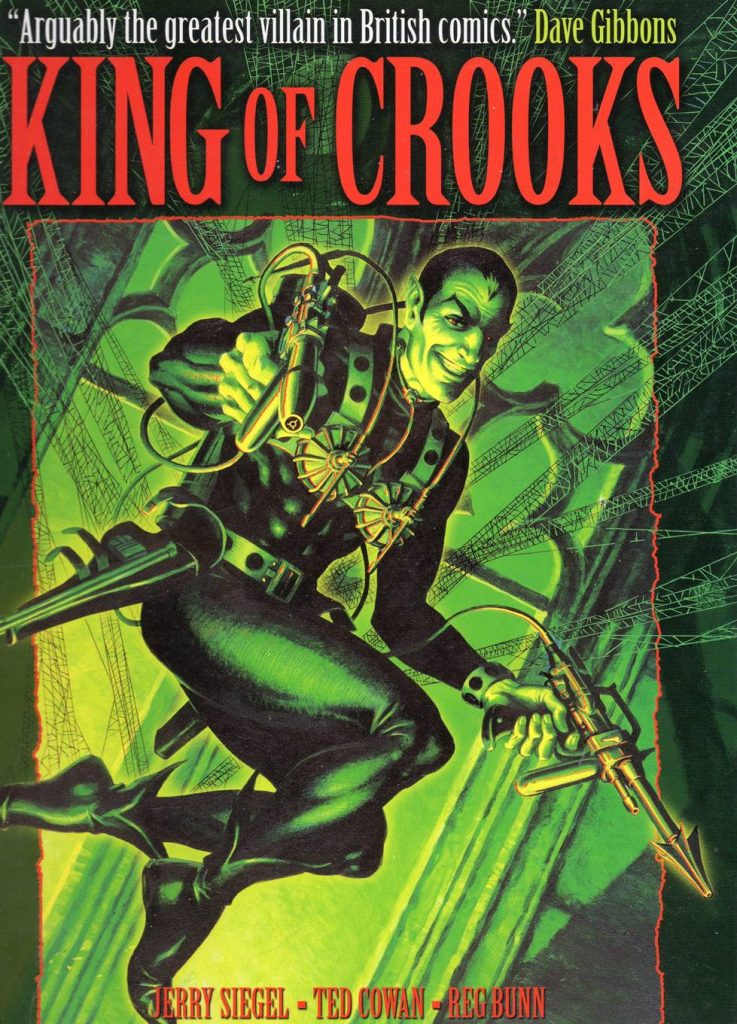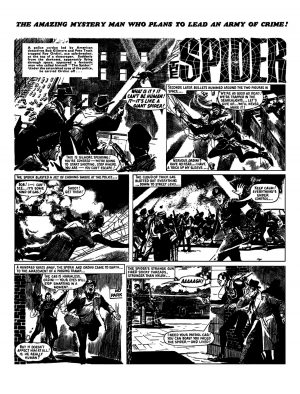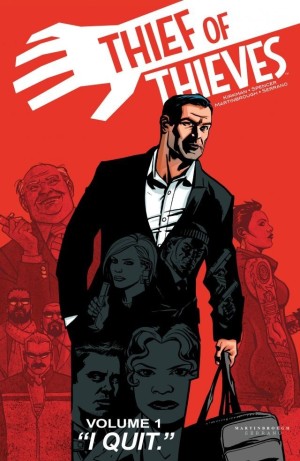Review by Frank Plowright
American pulp adventurer the Spider is a trademarked property in the USA, meaning these 1960s adventures of the British master criminal were issued as King of Crooks. The aptly named King of Crooks is a different Spider, distinctively designed by artist Reg Bunn, and set in what for the readers of the time was the exotica of New York by co-creator Ted Cowan. Adding a touch of lunacy, the Spider’s base is in a castle he transported from Scotland and rebuilt stone by stone.
Cowan wrote two of the three adventures here, in which the Spider himself is the only really fantastic element, earning his name by swirling around the rooftops on zipwires and firing containing webs from a gun. He’s prone to ambitiously arch statements, announcing his plan to construct an empire of crime on a scale previously unknown in an opening episode when he recruits the first of his henchmen, explosives expert Ray Ordini. It’s a vow frequently repeated. His next task is freeing maverick inventor Professor Pelham from jail, this far more complex involving calamity as a distraction. It’s during this caper that he first becomes aware of the threat police detectives Bob Gilmore and Pete Trask will become.
When the Spider first appeared in 1965 Bunn ensured the fashions and vehicles of the era were faithfully represented, which could date the strip now were it not for his precision, fine linework and work ethic. Every single panel is detailed and expansive, and instead of the look being dated, it resembles an incredibly finely researched period strip. Unfortunately, Titan only had access to strips from the comics themselves, and there’s been no clean up, so the wonder of Bunn’s art is sometimes lost in muddy smudges.
Over the first two stories Cowan gradually pieces the Spider together, a feature being his use of special effects technology and Pelham’s fantastic inventions, although the web-firing pistol was developed pre-Pelham. Cowan also ensures the Spider commits his crimes in locations that Bunn can really extrapolate, like an amusement park or a submarine base, and his twisting plots pack a lot of action into three page chapters. At the start it’s the Spider’s character that compels, but Cowan later writes inventive mysteries that still thrill and confound, and introduces the excitement of fellow master criminals targeting the Spider.
In hindsight, a bigger surprise than anything in the actual strips is Jerry Siegel delivering the final story. What a damning indictment of DC that Siegel was scrabbling about for freelance assignments almost thirty years after co-creating Superman. He picks up on the more fantastic elements Cowan introduced in the conflict with Mirror Man, introducing Dr Mysterioso, another master criminal. This broadening recognises that however persistent, a pair of police detectives in trenchcoats weren’t thrilling enough foes for someone with the Spider’s capabilities, although they remain part of the strip.
For nostalgic readers who hadn’t seen a Spider strip in years, in 2006 this collection was a godsend, despite the muddy art. However, Rebellion’s 2021 Syndicate of Crime is now the better buy for featuring all this content and as much again with remastered artwork. It does, however, lack Steve Holland’s informative introduction.




